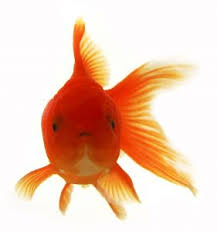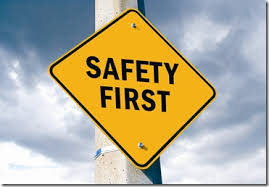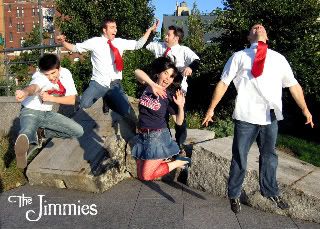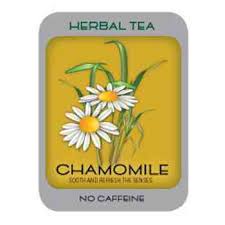
Thursday, April 23, 2009
Pet or No Pet? linking post at: http://www.familyresource.com/blog/category/lifestyles/pets/

Building Stronger Families and Relationships

Wednesday, April 15, 2009
Podcast on One Day as a Kid
 One Day as a Kid, looks at how a kid spends their typical day at the YMCA.
One Day as a Kid, looks at how a kid spends their typical day at the YMCA.Introduction/Summary:
Hello! Today we’re here in Laguna Niguel at John Malcom Elementary School at the YMCA, and today we’re going to be talking to one of the kids at the YMCA to see what their day is like here at John Malcom Elementary School.
Wow! There’s a lot of kids around here! Oh, excuse me! What’s your name?
Student: Jessie
Hi Jessie! How are you doing today?
Student: Good!
Hey, so you go to the YMCA?
Student: Yes.
Cool! And what grade are you in Jessie?
Student: Third grade.
Wow! Third grade! Do you have fun at the YMCA?
Student: Yes
Wow! So what do you do? After school you go to the YMCA, and what do you do next?
Student: We play games.
And what kind of games do you play?
Student: Handball outside.
Do you spend the whole time outside, or do you go inside?
Student: Inside, and we play the Wii.
Yeah! What kinds of things do you do when you’re inside? Besides playing the Wii?Do you guys have all sorts of games?
Student: Yeah.
Like what kinds of games?
Student: Air hockey.
Wow! Air hockey! I bet the boys like that one.
Student: Yes.
And you said you have the Wii. What else do you have?
Student: Basketball.
Okay.
Student: you know like when…
When you shoot hoops?
Student: Yeah.
Cool! Wow! Are you good at that?
Student: Mmmm… yeah!
Okay, and what about, so you have the Wii, you have basketball, you have air hockey. Is there anything else that you do inside?
Student: Board games.
Board games! Oh, okay. Those are always fun, do you play like in a big group?
Student: Mmmhmm.
Awe! Okay so then you said outside, you said you guys play handball, what else?
Student: Big toy.
You guys play on the big toy, is that like a big playground?
Student: Yes.
Wow! So do you have like slides, and like monkey bars…
Student: …and swings.
And swings? Awe, cool! So then what do you do, so sometimes you go inside and sometimes you go outside. Is there anything else that you do at the YMCA?
Student: Snack. Healthy snacks.
Yeah! You guys have, what kinds of healthy snacks do you have?
Student: Crackers.
Crackers, and do you guys have fruits or vegetables?
Student: Yes.
What is your favorite fruit and vegetable?
Student: Grapes.
And what about your favorite vegetable?
Student: Green beans.
Green beans? Oh, well that sounds like you guys get lots of healthy nutritious food at the YMCA too!
Student: Yes.
And do you guys do homework at the YMCA?
Student: Yes.
Do you have lots of it?
Student: Yes. Sometimes.
Wow! Well that’s very cool! Who are your teachers at the YMCA?
Student: Miss Annie, Mr. Tim, Mrs. Michelle, Mrs. Allie, Mr. Evan, and Mrs. Ashley, and those are all our teachers.
Oh! So that’s, what? Six teachers and helpers? Wow! Do you enjoy being around them?
Student: Yes, I enjoy Annie.
Oh! Good! Well thank you Jessie for talking to me today! Hope you have fun at the Y!
Student: Thank you!
Bye!
Student: Bye!
Thursday, April 9, 2009
Not to give a sare, but avoid one. Linking post @: http://www.familyresource.com/blog/category/parenting/child-safety/

Safety Tips!

Thursday, March 26, 2009
Linking Post @http://www.familyresource.com/blog/2009/03/15/kid-music-the-jimmies/

Music for the Ears
The sound of music serves as a remedy and it also proves to be an effective learning tool for young children. Programs like "Baby Einstine" founded by Julie Clark who aimed to create interactive experiences for the developing mind of a child. In the world of discovery, there is much to consider in this shared world of understanding. Clarkʻs aim was to uncover a new, exciting, and fun world for babies to enter into their being and existence within the universe of wonder.
In "Baby Einstein" their goal is to create a world where the baby is the central part of a developing universe. Their goal is accomplished by using tailored methods that engage and interact in the way that a baby would. It integrates music, poetry, art, language, and nature in a way that enriches the developing mind in a playful, fun and interactive way.
"Baby Einstein" uses hands on experience, and engages the viewer to clap along, sing along, and move along in the journey of development. The first three years of development are the most critical. It is important for parents to interact with their kids by broadening their horizons and curiosity. By installing feelings of happiness, healthy habits, and smarts, this enables a baby to forgo life with a fresh beginning towards the road of accomplishment and high achievement.
Thursday, March 5, 2009
Linking Post @ http://www.kidsculturecenter.com/

Stages & Ages

Wednesday, February 18, 2009
Linking Post @ http://www.familyresource.com/blog/2009/02/11/top-3-herbal-remedies-for-kids/



Linking Post @ http://childdevelopmentblog.info/
Let 'em Play!

Wednesday, February 4, 2009
What is SIDS?
Wednesday, January 21, 2009
Kid+ology

Introduction
This blog will go into child development, roles, patterns and behaviors. Through research and study of past and current expertise, I hope to embark in this journey of learning and growing in my understanding and appreciation for kids and their physical, social, and emotional make-up. I have seen the contributions that kids have already made and I am eager to see what contributions will be made, but are yet to come.
For additional information on beginning to understand different aspects of development, you can go to my "Additional Links"
